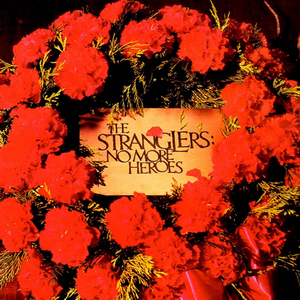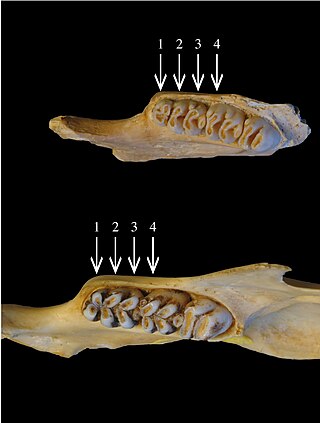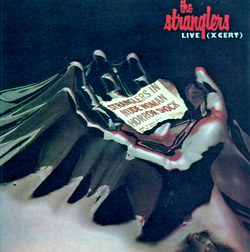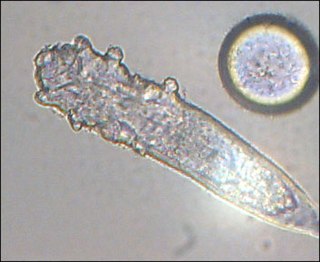
The brown rat, also known as the common rat, street rat, sewer rat, wharf rat, Hanover rat, Norway rat and Norwegian rat, is a widespread species of common rat. One of the largest muroids, it is a brown or grey rodent with a head and body length of up to 28 cm (11 in) long, and a tail slightly shorter than that. It weighs between 140 and 500 g. Thought to have originated in northern China and neighbouring areas, this rodent has now spread to all continents except Antarctica, and is the dominant rat in Europe and much of North America. With rare exceptions, the brown rat lives wherever humans live, particularly in urban areas.

Rattus is a genus of muroid rodents, all typically called rats. However, the term rat can also be applied to rodent species outside of this genus.

No More Heroes is the second studio album by English new wave band the Stranglers. It was released on 23 September 1977, through record label United Artists in most of the world and A&M in the United States, five months after their debut album, Rattus Norvegicus.

Demodicosis, also called Demodex folliculitis in humans and demodectic mange or red mange in animals, is caused by a sensitivity to and overpopulation of Demodex spp. as the host's immune system is unable to keep the mites under control.
Keratin 21 is a type I cytokeratin which expresses immunologically specific fusion protein. It is not found in humans, but only in Rattus norvegicus. It is first detectable after 18-19 days of gestation.

Demodex is a genus of tiny mites that live in or near hair follicles of mammals. Around 65 species of Demodex are known. Two species live on humans: Demodex folliculorum and Demodex brevis, both frequently referred to as eyelash mites, alternatively face mites or skin mites. Different species of animals host different species of Demodex. Demodex canis lives on the domestic dog. The presence of Demodex species on mammals is common and usually does not cause any symptoms. Demodex is derived from Greek δημός dēmos "fat" and δήξ dēx, "woodworm".

The Flores giant rat is a rodent of the family Muridae that occurs on the island of Flores in Indonesia. It has been recorded in Rutong Protection Forest. The species is found in primary, secondary and disturbed forest over a wide range of elevations. Head and body length is 41–45 cm (16–17.5 in) and tail length is 33–70 cm (13–27.5 in). These dimensions are about twice as large as those of a typical brown rat, which suggests about eight times the body mass.

Rattus Norvegicus is the debut studio album by the Stranglers, released on 15 April 1977.

Live (X Cert) is the first live album by the Stranglers, released in February 1979 by United Artists. It contains tracks recorded at The Roundhouse in June and November 1977 and at Battersea Park in September 1978.

Demodex folliculorum is a microscopic mite that can only survive on the skin of humans. Most people have D. folliculorum on their skin. Usually, the mites do not cause any harm, so are considered an example of commensalism rather than parasitism. D. folliculorum-caused disease, though, is known as demodicosis.

Bion 5, or also Kosmos 1129 was a Bion satellite. It was a biomedical research mission involving scientists from nine countries, launched on 29 September 1979, at 15:30:00 UTC. Among the experiments was the first attempt to breed mammals in space, which proved unsuccessful. The mission ended after 18.5 days, on 14 October 1979, at 02:24 UTC. The mission had the cooperation of the Bulgaria, Czechoslovakia, East Germany, France, Hungary, Poland, Romania, the United States and the Soviet Union.
Seoul orthohantavirus (SEOV) is a member of the Orthohantavirus family of rodent-borne viruses and is one of the 4 hantaviruses that are known to be able to cause Hantavirus hemorrhagic fever with renal syndrome (HFRS). It is an Old World hantavirus; a negative sense, single-stranded, tri-segmented RNA virus.

The Himalayan field rat, sometimes known as the white-footed Indo-Chinese rat, is a species of rodent in the family Muridae. It has a wide range, being found in India, Bangladesh, Nepal, Bhutan, China, Myanmar, Laos, Thailand, and Vietnam, with introduced populations in Indonesia (widely), Palau, and the Philippines. A common species, the International Union for Conservation of Nature has assessed its conservation status as being of "least concern".
Gigantolaelaps mattogrossensis is a mite from the Americas. It has been found on the marsh rice rat, hispid cotton rat, black rat, brown rat, and white-footed mouse in the United States. In Venezuela, it has been recorded from Holochilus brasiliensis, Sigmodon hirsutus, and Marmosa robinsoni. In Argentina, it has been found on Scapteromys aquaticus, Oligoryzomys flavescens, and Holochilus brasiliensis. The North American form was first described as a separate species, Gigantolaelaps cricetidarum, and is still occasionally considered as such.
Thailand virus (THAIV) is a single-stranded, enveloped, negative-sense RNA orthohantavirus.
Bartonella rattimassiliensis is a bacterium from the genus Bartonella which was isolated from the rat Rattus norvegicus.

Chelonoidis niger duncanensis, commonly known as the Pinzón Island giant tortoise, is a subspecies of Galápagos tortoise endemic to Pinzón Island in the Galápagos.

Rattini is a very large, diverse tribe of muroid rodents in the subfamily Murinae. They are found throughout Asia and Australasia, with a few species ranging into Europe and northern Africa. The most well-known members of this group are the true rats, several species of which have been introduced worldwide.












